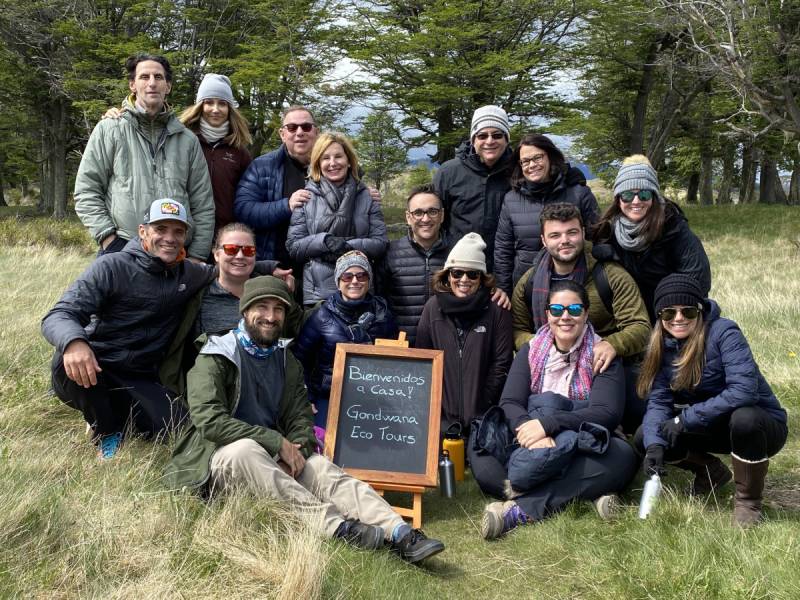Does Arizona Have The Northern Lights?
PRIVATE & SMALL GROUP TOURS TO THE WORLD'S BEST DESTINATIONS
Are You Planning A Trip To See The Northern Lights?

Northern Lights in Arizona: What You Need to Know
As a responsible and experienced tour company offering unforgettable Northern Lights tours in Alaska, we often get asked if the aurora borealis is visible in states outside of Alaska—especially in the Southwest. While Arizona’s night skies are famous for stargazing, the chances of witnessing the aurora here are extremely low.
Can You See the Northern Lights in Arizona?
Under typical conditions, you cannot see the Northern Lights in Arizona. The state is located far south of the auroral oval, the ring-shaped zone around the poles where aurora activity is concentrated. While it's not impossible for extreme geomagnetic storms to momentarily expand auroral reach, these events are extremely rare, brief, and generally not visible to the naked eye without specialized equipment.
Can You See the Northern Lights in Flagstaff or Northern Arizona?
Flagstaff is known for its dark skies and elevation, making it a popular destination for astronomers and stargazers. That said, even in Flagstaff, sightings of the aurora are extraordinarily rare. On rare occasions of extreme solar activity, a faint reddish glow may appear low on the horizon, but these events happen perhaps once every decade—if that.
Can You See the Northern Lights in Phoenix or Tucson?
No. Due to low elevation, significant light pollution, and distance from the auroral zone, southern cities like Phoenix and Tucson have no realistic aurora viewing potential—regardless of solar conditions.
Global Solar Activity Forecast (2026–2030)
The forecast below outlines predicted global solar activity during Solar Cycle 25, which drives auroral visibility across high-latitude regions in the Northern and Southern Hemispheres. While stronger geomagnetic storms during peak years may occasionally push auroras farther south, locations like Arizona will remain well outside the reliable viewing zone.
| Year | Global Aurora Activity Forecast | Notes | Sources |
|---|---|---|---|
| 2026 | Very High | Peak of Solar Cycle 25. Frequent geomagnetic storms expected in auroral regions. | NOAA, NASA, Space.com, Andy Keen |
| 2027 | Extremely High | Strong lag-year activity continues. Excellent for high-latitude aurora viewing. | LiveScience, Aurora Tracks |
| 2028 | Moderate to High | Activity gradually declines, but auroras remain frequent in northern regions. | Space.com, Aurora Guide by Andy Keen |
| 2029 | Low to Moderate | Fewer solar storms. Strong auroras limited to isolated high-latitude events. | NOAA Solar Cycle Forecasts, Forbes |
| 2030 | Low | End of Solar Cycle 25. Only rare auroras during isolated geomagnetic storms. | AP News, Aurora Tracks |
Why You Should Consider Other States
If your goal is to see a dazzling display of the Northern Lights, Arizona is not a practical destination. States like Alaska, Montana, and North Dakota are far better suited for reliable viewing—especially during solar peak years. You can explore the full list of best U.S. states for Northern Lights viewing here.
Final Thoughts
Arizona’s beauty shines through its red rock canyons, vast deserts, and crystal-clear skies—but not its aurora potential. If you’re serious about seeing the Northern Lights, look north. Let us help you witness the aurora in one of the most active and accessible regions on Earth—join our Northern Lights tour in Fairbanks, Alaska for a truly unforgettable experience.
Download all three Alaska tour brochures for tour dates and pricing.

About Gondwana Ecotours
Gondwana Ecoutours specializes in small group and private tours to bucket list destinations around the world. Our itineraries are carefully curated to include both unique nature and culture and fun activities are suitable to most travelers. Traveling with guides who live in the communities we visit add depth and authenticity to the experience.
| See All Tours > |

